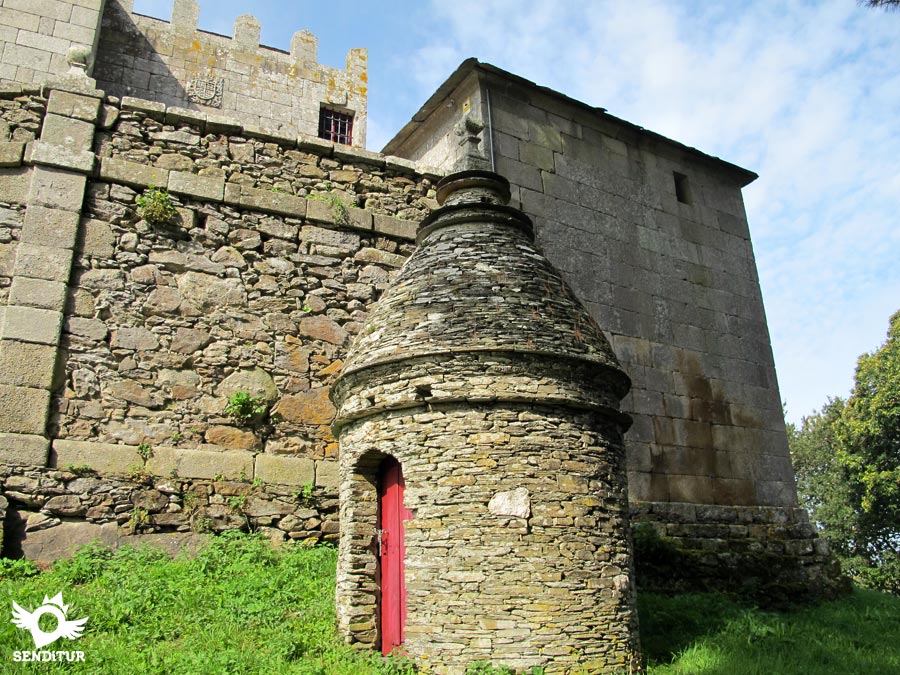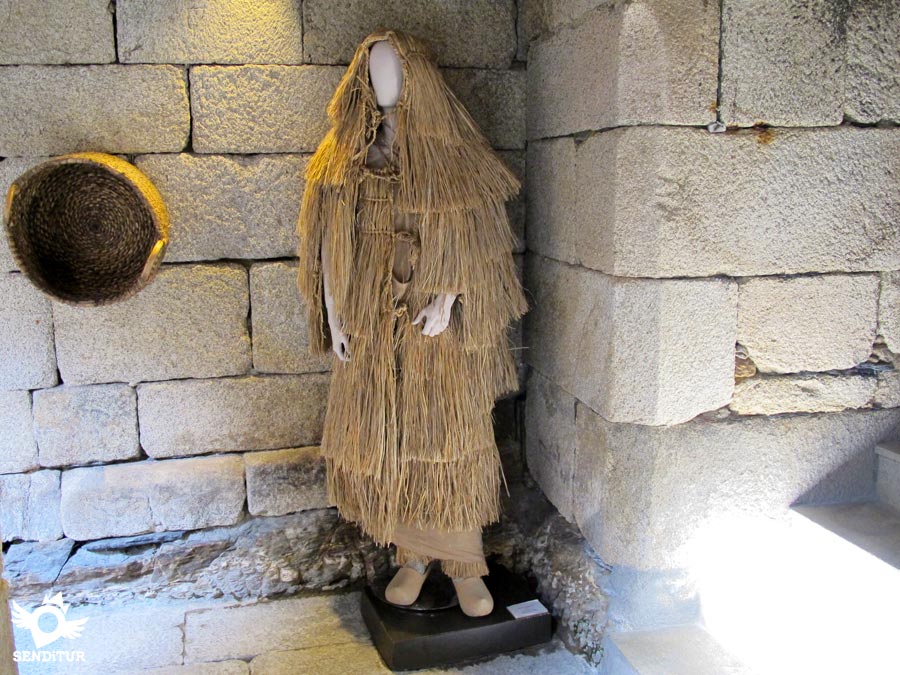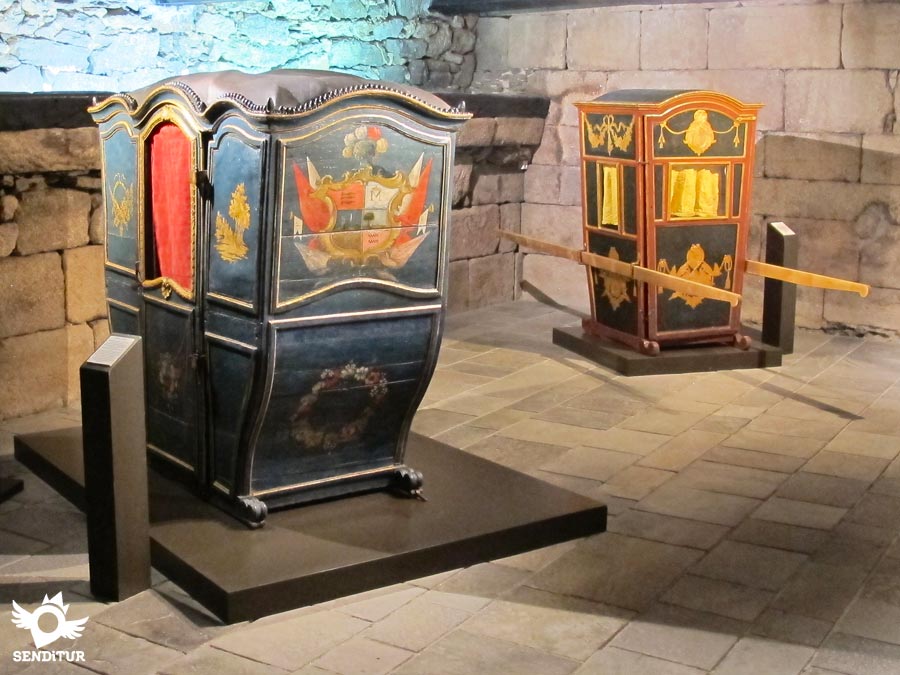Museum Fortress of San Paio de Narla
Castronela, Lugo![]()
![]()
![]()
![]()
![]() (0)
(0)
One of the oldest castles in the province of Lugo
Castronela, Lugo![]()
![]()
![]()
![]()
![]() (0)
(0)
One of the oldest castles in the province of Lugo
It is situated where the rivers Grande and Pequeño meet, an area where elevations are not abundant; on the location of an old castro, in the village of Castronela, belonging to the parish of Xiá from which the tower also takes its name, also known as Torre de Xiá or de Friol. The first writings referring to the tower date from the 14th century, although the original construction probably dates from the 12th or 13th century. When the War of the Irmandiños, in the fifteenth century, the castle was almost destroyed, being Vasco de Seixas who in the sixteenth century rebuilt it. In the 18th century the Campomanes family owned the fortress, and at the end of the 19th century it was bought by the Novo family who sold it again and so on until in 1939 it was acquired by the Provincial Council of Lugo. The tower was for several decades without any use, today is the Historical and Ethnographic Museum or Fortress Museum of San Paio de Narla, forming part of the Network of Museums of Lugo.

The access ramp to the fortress leads the visitor to discover a beautiful 18th century chapel which, outside the building, will give him a small vision of what he is going to discover and admire inside the museum. Once you have passed through the entrance door to the tower, which has a semicircular arch dating from the 16th century, you can travel back in time by going through the different rooms, which in turn house as many exhibitions. The courtyard and its surroundings, the stables of the horses now occupied by saddles and hand chairs, the wine cellar with its own utensils. On the first floor the kitchen shows three elements of the first construction, the fireplace, the oven and the toilet, as well as the furniture and dishes typical of a Galician kitchen; in the living room a fireplace and a large angular window with seats give an image of the quiet and pleasant afternoons that could be enjoyed here; A room with utensils related to the work of the looms and a corridor in which pieces like mortars and objects of illumination are exhibited, give way to the desk, next to this one is recreated in another room as it would be a bedroom with all its attires. Going up through the different floors of the Tribute Tower and admiring a careful exhibition of white weapons, firearms and knight's armour, one arrives at an upper battlement, where what the tower offers is a worthy colophon to such an interesting visit, a beautiful panoramic view of the spectacular landscape that surrounds it.

Oral history brings to our days as, running the year 1543, the lord of the castle, Vasco de Seixas, according to fame, cruel man, married Doña Catalina de San Tirso, to whom he did not give good life, until he accused her of adultery and killed her. A few days after she was buried, Catalina's father, the Asturian Lope de San Tirso, ordered the body to be exhumed, as he had suspicions about the death of his daughter and what was not the surprise of those present when he found that the victim's body was still bleeding from the wounds that her husband had inflicted on her. One day, while the lord of San Paio de Narla was hunting in Portugal, some vassals of the Duke of Verganza killed him, thus avenging the unfortunate Doña Catalina.
One of the masonry stones of the castle tells us that its construction can be from the 13th century. In addition, the marks, identity seals that the stonemasons leave in their work, coincide with those of Romanesque churches in the region.


There is a legend about one of the lords of the castle of San Paio who had a beautiful daughter whom he considered his most precious treasure. One day Berta, as the girl was called, went to ride, as she did every afternoon, on a spirited horse with such bad fortune that he got scared and rampant but a peasant who walked around the place managed to hold the steed and as in almost all stories, the young men fell in love trying to keep it secret but the girl's father discovered it and opposed these loves. The lovers, in their desperation, decided to escape. When the fact reached the ears of the lord of the castle he sent the soldiers in pursuit with the order to kill the, for him, unworthy in love with his daughter. The young men then hid in a cave, dwelling of a great snake that when feeling its presence attacked them, then the boy to defend its loved one drew a dagger and clinging to the snake it nailed it not before this one had injected its poison to him. Snake and young man died at the same time. Since then this cave has been known as the "Cave of the Serpent".
To get to the Museum Fortress of San Paio de Narla we must head towards Friol either from Lugo following the LU-232 or from Palas de Rei along the LU-231 that links these towns.
We must follow the road AC-934 that connects Friol with Sobrado, and shortly after leaving Friol we find the road LU-P-2108 that comes here from Melide, from where we can also reach the Museum-Fortress of San Paio de Narla. Shortly after taking this road as we do from Friol, we will reach the detour that will bring us to Castronela place where the fortress is located which we can surely already see among the trees.
SENDITUR is not responsible for any variation in the information described, as well as for the misuse of its guides and recommends that everyone be responsible and prudent in carrying out the activity. Likewise, we invite you to document yourself with books and specialized guides to complement the information described. From the commitment of SENDITUR with Nature and the respect to the balance of the environment, SENDITUR urges you to travel in a responsible way, with low environmental impact and respecting at all times the Natural, Cultural and Social environment wherever you go. For any suggestion, SENDITUR invites you to send an email to
Continue watching …